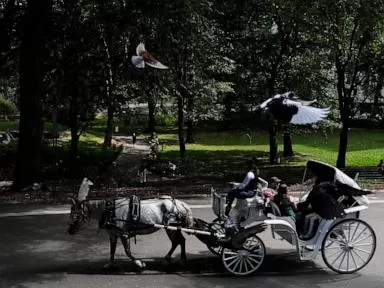Safeguarding Tomorrow: How Tech Giants Are Building Guardrails for Children in the Age of Generative AI
Share- Nishadil
- September 18, 2025
- 0 Comments
- 3 minutes read
- 32 Views

Tech Giants Race to Build Robust Safeguards for Children Against Generative AI's Risks
Discover the critical measures tech companies are taking to safeguard children from the potential dangers of generative AI, focusing on content moderation, age verification, and industry collaboration to ensure a safer digital future.
The rapid advancement of generative artificial intelligence has unleashed an unprecedented wave of innovation, but it also casts a long shadow of concern, especially when it comes to the safety and well-being of children. As AI-powered tools like ChatGPT become ubiquitous, the critical question arises: how are tech companies stepping up to protect younger users from potential harms?
Generative AI, capable of creating everything from hyper-realistic images and videos to sophisticated text, presents unique challenges.
Children, being particularly vulnerable, face risks ranging from exposure to inappropriate content and misinformation to sophisticated cyberbullying and the creation of convincing deepfakes. Privacy is another paramount concern, as these models often train on vast datasets that could inadvertently expose personal information.
Recognizing the urgency, major tech players are increasingly investing in robust safety mechanisms.
This includes developing advanced content filters designed to detect and block harmful material before it reaches young eyes. These filters are constantly evolving, leveraging AI itself to identify and mitigate new threats like hateful speech, violent imagery, and sexually explicit content. Many platforms are also implementing strict age verification protocols, although the effectiveness of these systems remains a subject of ongoing debate and development.
Furthermore, there's a growing emphasis on creating AI experiences specifically tailored for children, often featuring simpler interfaces, enhanced parental controls, and curated content libraries.
Companies are also exploring ways to integrate 'digital literacy' tools, helping children understand how AI works, its limitations, and how to interact with it safely and critically. This includes transparent disclaimers about AI-generated content and features that prevent the creation of harmful or unethical material.
Beyond internal efforts, there's a strong push for industry-wide collaboration and legislative action.
Tech companies are frequently engaging with policymakers, advocacy groups, and child development experts to establish common standards and best practices. Laws like California's Kids Online Safety Act, and similar proposals at national and international levels, aim to mandate stronger protections, hold platforms accountable, and ensure that AI development prioritizes the safety of its youngest users.
These regulations often focus on transparency, data privacy, and the elimination of features that might exploit or manipulate children.
However, the battle for online child safety in the AI era is far from over. The dynamic nature of AI means that new threats can emerge quickly, requiring continuous vigilance and adaptation from both technology providers and regulatory bodies.
The collective responsibility lies with parents, educators, tech companies, and governments to foster an environment where children can explore the wonders of AI without being exposed to its perils, ensuring that the next generation can thrive safely in an increasingly AI-driven world.
.- UnitedStatesOfAmerica
- News
- Technology
- TechnologyNews
- Tech
- GenerativeAi
- ChildAbuse
- ChildSexualAbuse
- ChildSafety
- Design
- InternetSafety
- Report
- AiEthics
- ContentModeration
- Model
- TechCompanies
- AiRisks
- AgeVerification
- DigitalLiteracy
- TechCompany
- Child
- Csam
- AiConference
- KidsOnlineSafetyAct
- Safeguard
- Principle
- TechDeveloper
- Guideline
- Thorn
- Portnoff
- OnlineProtection
Disclaimer: This article was generated in part using artificial intelligence and may contain errors or omissions. The content is provided for informational purposes only and does not constitute professional advice. We makes no representations or warranties regarding its accuracy, completeness, or reliability. Readers are advised to verify the information independently before relying on







